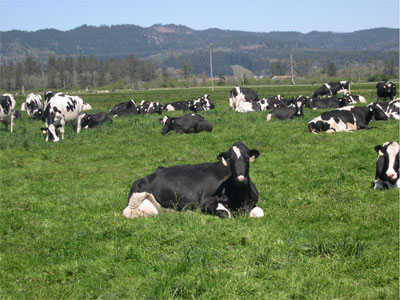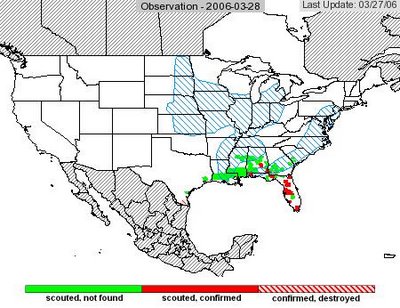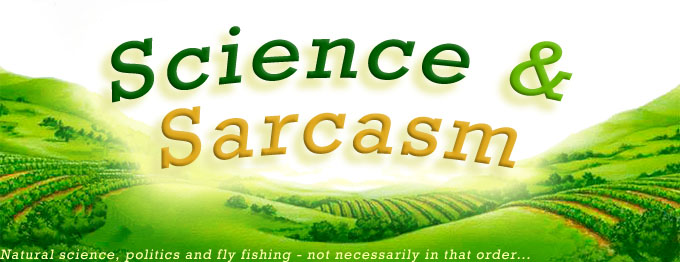From the eye of the potato, #2
Agriculture News
 A study by the nonprofit group, Cornucopia Institute, ranks 'organic-ness' of milk and other dairy products sold as organic. The group applied federal organic standards as well as additional ecological and humane considerations. Of the 65 brands ranked, 18 received the highest rating. 10 companies refused to participate, and those organizations represent 60-70% of the organic milk market - not a good sign. Check the Cornucopia scorecard for your brand (best ratings are at the top of the list).
A study by the nonprofit group, Cornucopia Institute, ranks 'organic-ness' of milk and other dairy products sold as organic. The group applied federal organic standards as well as additional ecological and humane considerations. Of the 65 brands ranked, 18 received the highest rating. 10 companies refused to participate, and those organizations represent 60-70% of the organic milk market - not a good sign. Check the Cornucopia scorecard for your brand (best ratings are at the top of the list).I guess the 'buy local' concept may still be the best option.
The Union of Concerned Scientists says grass-fed beef and milk are healthier than their conventionally produced counterparts. The UCS study compiled the results of 25 English-language studies comparing the amounts of total fats, saturated fats, omega-3 fatty acids, and conjugated linoleic acid in both pasture-raised and conventionally raised beef and dairy cattle. Specifically, they found sufficient evidence for some claims about the health benefits of grass-fed beef including:
- Steak and ground beef from grass-fed cattle can be labeled “lean” or “extra lean.”
- Some steak from grass-fed cattle can be labeled “lower in total fat” than steak from conventionally raised cattle.
- Steak from grass-fed cattle can carry the health claim that foods low in total fat may reduce the risk of cancer.
- Steak and ground beef from grass-fed cattle can carry the “qualified” health claim that foods containing the omega-3 fatty acids EPA or DHA may reduce the risk of heart disease.
The authors go on to expand their comments to other areas not addressed directly in their literature review - environmental impacts, use of antibiotics, etc. See UCS's executive summary (.pdf) for more details.
 Soybean rust, for cash crop farmers, is a similar to Bird Flu for poultry farmers - a cause for insomnia. Soybean rust is a fungal plant disease that has caused serious crop losses (10-80%) in other world regions - Australia, Asia, Africa, and South America. Spores of the soybean rust fungus [Phakopsora pachyrhizi] first appeared in the southeast US in 2004, possibly transported by winds of Hurricane Ivan.
Soybean rust, for cash crop farmers, is a similar to Bird Flu for poultry farmers - a cause for insomnia. Soybean rust is a fungal plant disease that has caused serious crop losses (10-80%) in other world regions - Australia, Asia, Africa, and South America. Spores of the soybean rust fungus [Phakopsora pachyrhizi] first appeared in the southeast US in 2004, possibly transported by winds of Hurricane Ivan.Complicating the detection of and response to the disease, are the large number of potential hosts of the fungus. In addition to soybean, there are 30 species of legumes reported to be hosts for P. pachyrhizi in nature. One widespread host in the southeastern United States is kudzu [Pueraria montana var. lobata]. Kudzu is a prolific invasive weed in the southeastern US, and is often referred to as "the plant that ate the South." The USDA has launched a huge program to assist soybean growers and other agricultural industries deal with this fungal pathogen. Winter temperatures in northern states will probably be sufficiently cold to prevent overwintering of the fungus. Southern agricultural ecosystems are most at risk. Simple prevention and containment are out of the question given these challenges, so growers are presently directed to employ the use of fungicides to control the disease. Development of rust-resistant soybean cultivars is also underway.
Technorati tag(s): science, agriculture, blogs & links
The Fly Fishing Loop is sponsored by flydepot.com
[ Home Waters | Next | Random | List | Search ]

This work is licensed under a Creative Commons Attribution-NonCommercial-ShareAlike 2.5 License.





